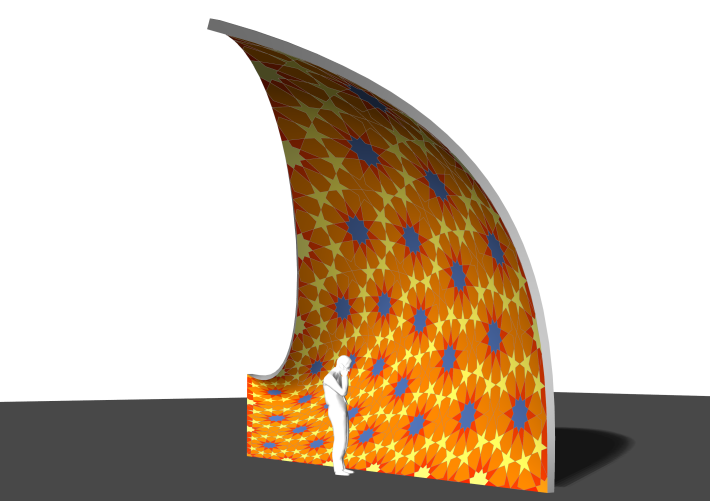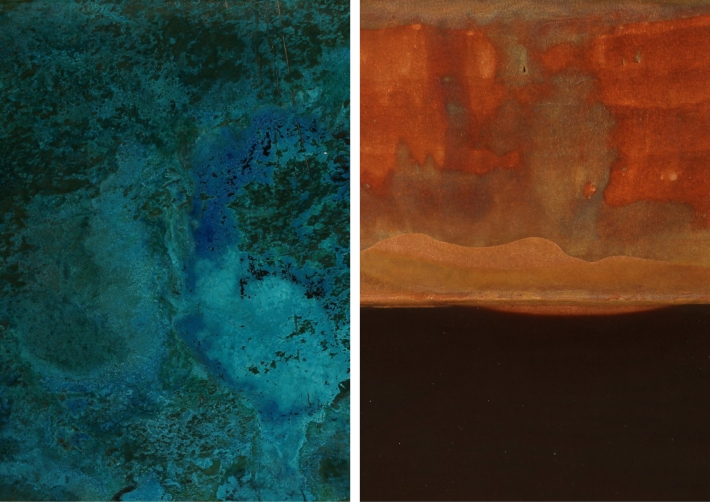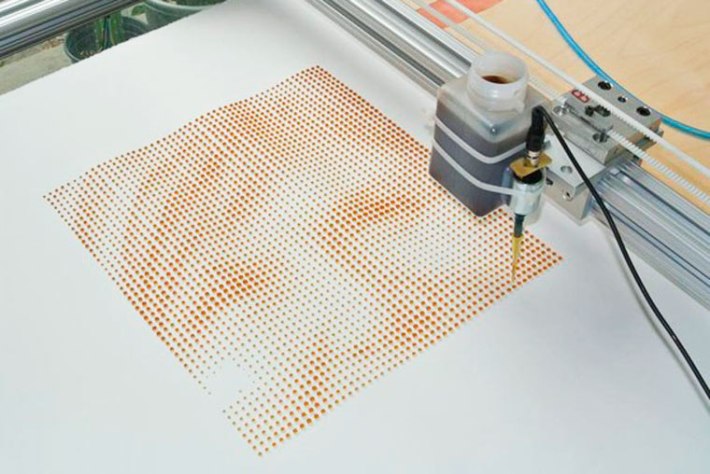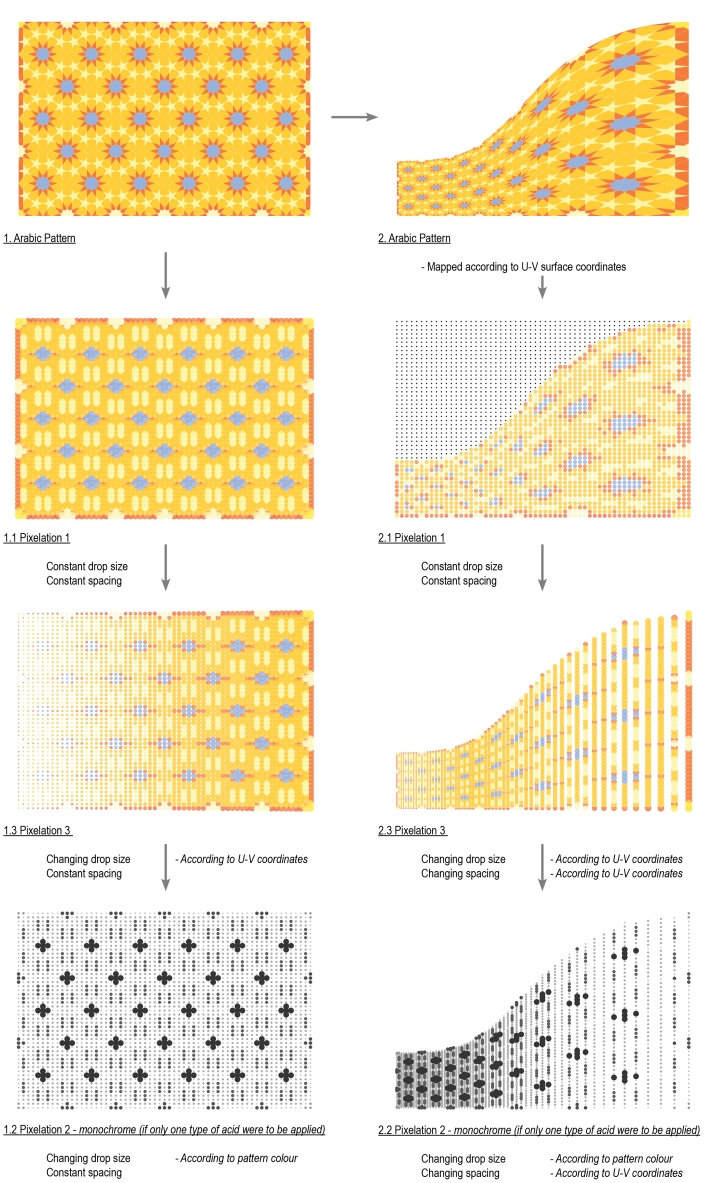This investigation is about reinterpreting Arabic geometric ornamentation, or girith tiles, for new possibilities in digital design and fabrication. Traditionally, these geometric patterns are constructed by craftsmen, with rather simple tools compared to the apparent complexity of the outcome. The technique relies on a clear set of mathematical rules and 5 standardized geometric shapes to achieve this complexity (Lu & Steinhardt, 2007). One of the major benefits of computer aided design and digital fabrication is, arguably, that more complexity and heterogeneity can be achieved, and physically produced, without extra work, cost, and time. So whereas the traditional craftsmen are constrained by the mathematical rules and shapes underlying the production of their girith tiles – and are therefore limited to a certain set of possible outcomes – a designer, using digital tools, could take these shapes as a point of departure and guide the final outcome away from tradition, without the constraint of standardized shapes.
An experiment of this kind of reinterpretation can be seen in figure 1, where the pattern is no longer based on traditional geometric rules, but instead follows the topology of a surface.

Figure 1. Arabic pattern mapped according to U-V coordinates of surface, allowing ornamentation to follow form
I have taken inspiration from artists working with patination of copper, using different acids. This is a natural phenomenon whereby copper oxidates and receives different colors and patinas, over a long period of time, depending on what chemicals in the air the metal is exposed to. Artists, such as Stephen Bruce (see figure 2), are applying acids to sheets of copper for aesthetic effects. The idea is to do this in a more controlled and precise way using digital tools – printing acid on copper.

Figure 2. Acid on copper Art – Stephen Bruce
Figure 3 is a machine that prints drops of coffee on paper, built by Ted Kinsman using Arduino. This kind of machine could be made to print drops of acid on copper as well, in which case the output would be a pixelated version of any input.

Figure 3. Coffee printer – Ted Kinsman
The following images are experiments, using the parameters that could be easily programmed for the machine to follow (drop size and spacing between drops), where an Arabic pattern is pixelated according to different rules.

Figure 4. Experiments in reinterpreting the Arabic pattern for digital fabrication through pixelation
References.
http://makezine.com/2016/02/24/this-machine-prints-portraits-8000-drops-coffee/
http://www.stephenbstudios.com/
Lu, P.J., Steinhardt, P.J. (2007) Decagonal and Quasi-Crystalline Tilings in Medieval Islamic Architecture. Journal of Science 315(5815), 1106–1110